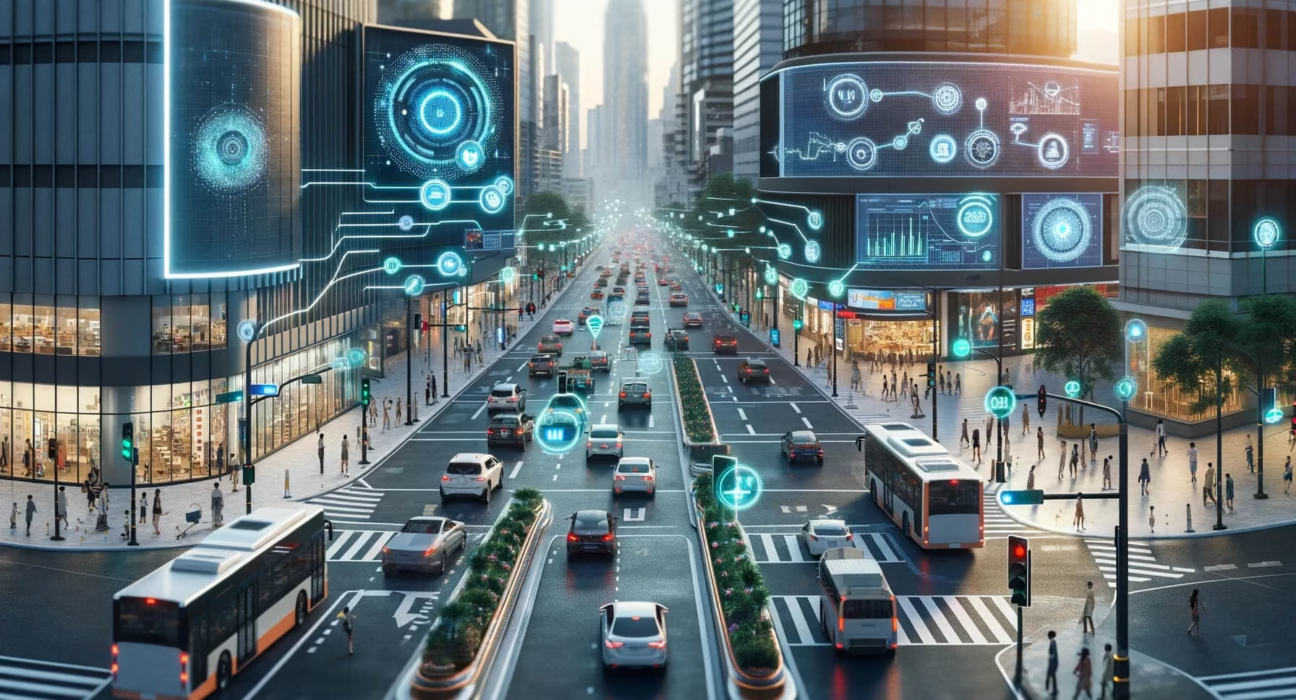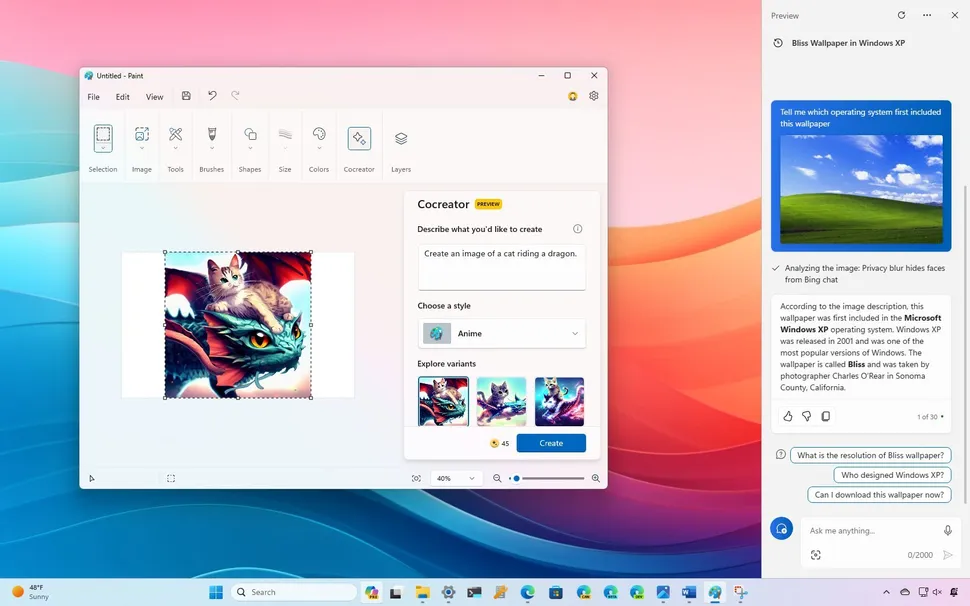AI Solutions for Traffic Congestion: Revolutionizing Urban Mobility
Estimated reading time: 8 minutes
Key Takeaways
- Traffic congestion is a major global issue, costing economies billions and negatively impacting quality of life.
- Traditional traffic management methods are often insufficient for modern, dynamic urban environments.
- AI optimizes city traffic flow by analyzing vast amounts of data and making real-time, dynamic adjustments.
- Key AI solutions include real-time data analytics, predictive modeling, smart traffic signals, and integration with connected/autonomous vehicles.
- The benefits of AI in traffic management are significant, leading to reduced travel times, lower emissions, improved safety, and enhanced urban mobility.
- The future of urban mobility is intrinsically linked to AI, promising even more integrated and efficient transportation systems.
- Implementing AI solutions requires addressing challenges like data privacy, infrastructure investment, and public acceptance.
Table of contents
- AI Solutions for Traffic Congestion: Revolutionizing Urban Mobility
- Key Takeaways
- The Pervasive Problem of Urban Traffic Congestion
- How AI Optimizes City Traffic Flow
- Key AI Solutions for Traffic Congestion
- Intelligent Traffic Management Systems Benefits
- The Future of Urban Mobility with AI
- Challenges and Considerations
- Concluding Thoughts
The Pervasive Problem of Urban Traffic Congestion
Imagine sitting in your car, inching forward in a seemingly endless stream of vehicles. The frustration is palpable, the wasted time is significant, and the impact on our daily lives is profound. This is the reality for millions of urban dwellers worldwide. Traffic congestion is not just an inconvenience; it’s a multifaceted problem with far-reaching consequences.
Indeed, “traffic congestion is a pervasive problem in modern cities, leading to lost productivity, increased emissions, higher fuel consumption, and negative health impacts.” Research highlights the significant economic drain, with estimates suggesting billions lost annually due to delays and inefficiencies on our roadways. Beyond the financial burden, the environmental toll is equally concerning. Idling vehicles contribute heavily to air pollution, exacerbating respiratory problems and contributing to climate change.
The challenge is that our cities are growing, and with them, the number of vehicles on the road. This rapid urbanization places immense pressure on existing transportation infrastructure. Historically, traffic management has relied on relatively static solutions. Discussing the limitations, it’s clear that “traditional traffic management methods—such as fixed-timed signals and manual monitoring—often fail to address the dynamic, complex nature of today’s urban traffic patterns.” These methods were designed for simpler times and are ill-equipped to handle the intricate, ever-changing ebb and flow of contemporary city traffic. This disconnect highlights the urgent need for more intelligent and adaptive strategies.


How AI Optimizes City Traffic Flow
This is where Artificial Intelligence (AI) steps in, offering a paradigm shift in how we approach urban mobility. The fundamental principle of “how AI optimizes city traffic flow” lies in its unparalleled ability to process and analyze massive datasets in real-time. Unlike human operators or fixed algorithms, AI can ingest information from a multitude of sources simultaneously, identify patterns, predict future scenarios, and make instantaneous, informed decisions. This capability is the bedrock of modern traffic management.
The core technological framework enabling this revolution is the development of “intelligent traffic management systems.” These are not mere upgrades to existing systems; they represent a fundamental rethinking of traffic control, driven by AI’s learning and adaptive capabilities. AI is revolutionizing how cities combat congestion by enabling systems to optimize city traffic flow dynamically. This dynamic optimization means that traffic management is no longer a reactive, but a proactive, intelligent process.


How do these sophisticated systems achieve this? They “leverage real-time data collection, machine learning, and predictive modeling to continuously analyze and respond to changing traffic conditions.” This data can come from a variety of sources, including smart sensors embedded in roads, high-definition traffic cameras, GPS data from vehicles, and even information from connected infrastructure and mobile devices. Machine learning algorithms then process this data, identifying anomalies, predicting traffic patterns, and calculating the most efficient signal timings, speed limits, and routing suggestions. The continuous feedback loop ensures that the system is always learning and adapting, making it incredibly responsive to the fluid nature of urban traffic.
Key AI Solutions for Traffic Congestion
The application of AI in traffic management is multifaceted, with several key solutions emerging as powerful tools against congestion:
Real-time AI Traffic Data Analytics:
At its core, “real-time AI traffic data analytics” refers to the process where AI platforms ingest data from various sources like smart sensors, cameras, and IoT devices to instantly detect traffic issues. These platforms are designed to provide immediate insights into what’s happening on the roads. They can identify “congestion build-ups, accidents, or other incidents” in real-time, allowing for rapid response. The actionable insights derived from these systems enable dynamic adjustments to traffic signals and prompt incident management. Studies have shown that these measures can effectively cut travel times by up to 25% in some cities, demonstrating the tangible impact of this technology. The ability to perform “real-time ai traffic data analytics” is foundational to the entire intelligent traffic management ecosystem.


Predictive Modeling and Traffic Flow Optimization:
Going beyond just reacting to current conditions, AI excels at forecasting. “Machine learning algorithms use both historical and current traffic data to forecast congestion, allowing early interventions such as proactively rerouting vehicles or changing traffic signal patterns to prevent bottlenecks from forming.” This predictive capability is crucial for effective traffic management. Instead of waiting for a jam to occur, AI can anticipate potential problems and implement strategies to mitigate them before they escalate. This proactive approach ensures smoother traffic flow and reduces the likelihood of cascading delays.
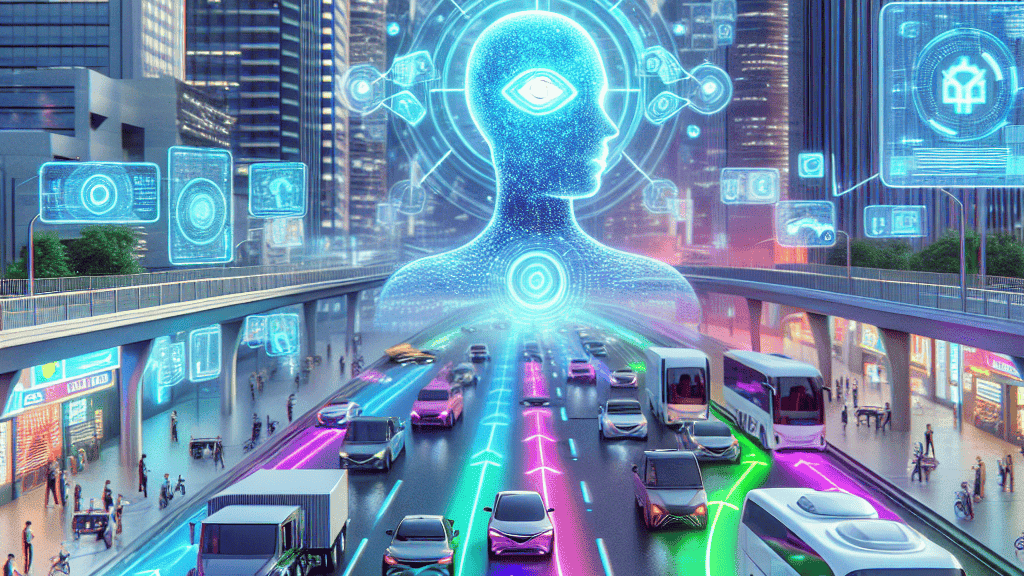

Smart Traffic Signals and Adaptive Control:
Traditional traffic signals operate on pre-programmed, fixed timings, often leading to unnecessary waiting even when there’s no opposing traffic. AI powers “adaptive signal systems that adjust lights in real time, moving beyond static, fixed-timed plans.” These intelligent signals react to actual traffic flows, sensors, and even pedestrian movements. The result? “These systems react to real-world traffic flows, reducing waiting times and unnecessary idling, thereby lowering emissions and improving journey reliability.” This dynamic adjustment ensures that green lights are prioritized for the directions with the most demand, significantly improving efficiency and reducing the frustrating stop-and-go experience.
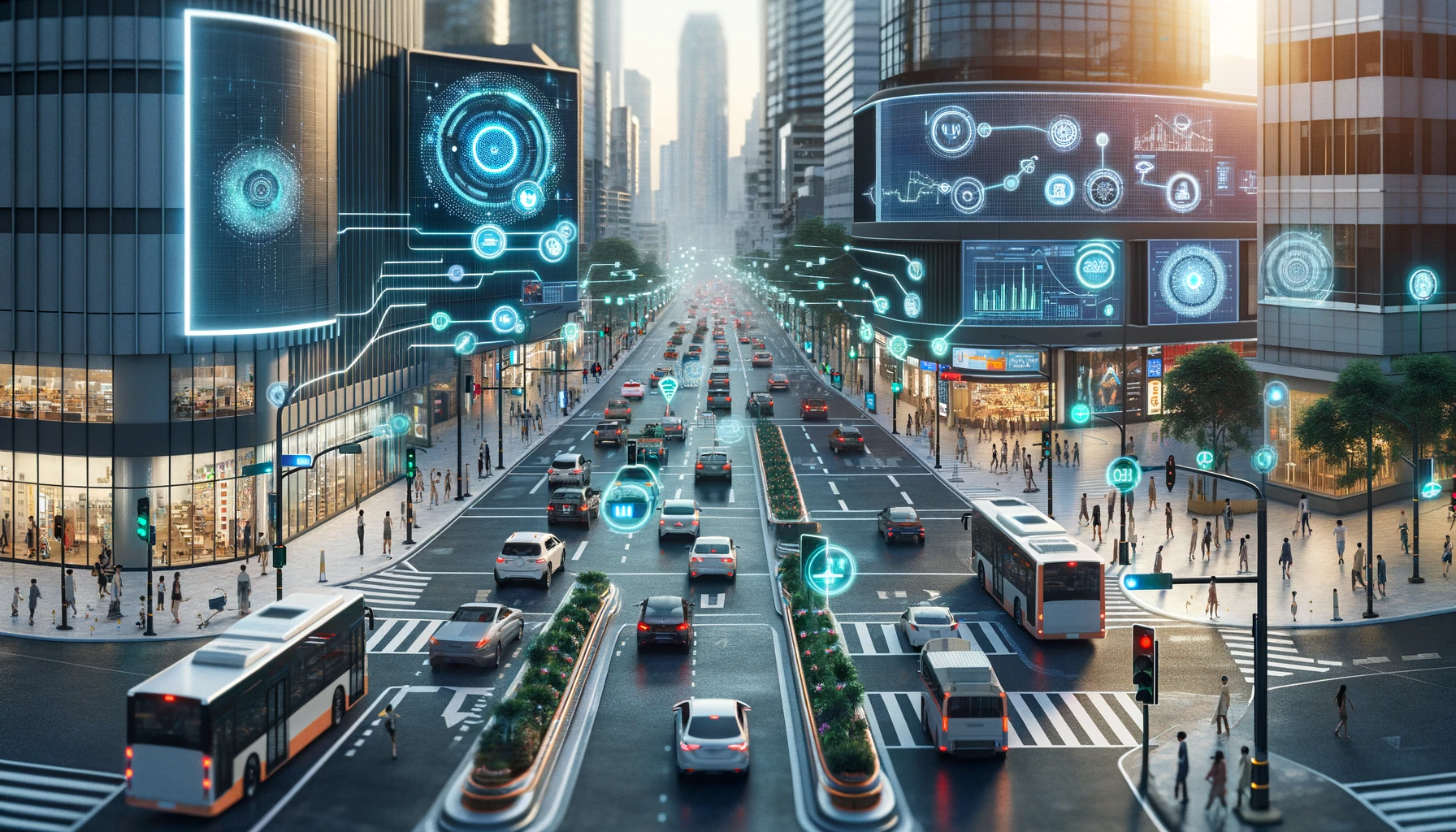

Connected and Autonomous Vehicles (CAVs) and AI Integration:
The synergy between AI and transportation extends to the vehicles themselves. AI facilitates crucial communication networks, enabling vehicle-to-vehicle (V2V) and vehicle-to-infrastructure (V2I) communication. “CAVs, equipped with AI, can coordinate driving behavior—such as platooning or optimized routing—leading to smoother traffic flow and accident reduction.” Platooning, where vehicles travel in close, electronically linked convoys, can dramatically increase road capacity and fuel efficiency. AI solutions for traffic congestion are inherently linked to the advancement and integration of these intelligent vehicles, as they become active participants in optimizing traffic flow.


Intelligent Traffic Management Systems Benefits
The implementation of intelligent traffic management systems powered by AI yields a cascade of benefits for urban environments and their inhabitants. These benefits are not theoretical; they are quantifiable improvements that directly impact daily life and the sustainability of our cities.
Clearly outlining the “intelligent traffic management systems benefits” reveals a compelling case for AI adoption:
- Reduced travel times and increased reliability for all road users: By optimizing signal timings, managing traffic flow, and providing real-time rerouting information, AI systems significantly cut down the time spent stuck in traffic. This enhanced reliability means commuters can plan their journeys with greater certainty. The efficiency gains mean less time wasted and more time for productive activities or leisure.
- Significant reductions in fuel consumption and greenhouse gas emissions due to less idling and optimized flows: When vehicles spend less time idling at red lights or stuck in stop-and-go traffic, they consume less fuel. This directly translates into lower carbon emissions and a cleaner urban environment. The environmental benefits are substantial, contributing to healthier cities and a more sustainable future.
- Improved road safety through faster incident detection and better traffic control: AI-powered systems can detect accidents or hazards much faster than traditional methods, allowing for quicker emergency response and better traffic management around incidents. This proactive approach to safety not only prevents secondary accidents but also minimizes disruptions. Enhanced control means safer journeys for everyone.
- Enhancement of public transit efficiency and overall urban mobility, leading to better quality of life and substantial economic savings—predicted at $277 billion by 2025 globally: By smoothing out traffic for all vehicles, AI also benefits public transportation. Buses and trams can run more reliably and on schedule, making public transit a more attractive option. This overall improvement in urban mobility contributes to a better quality of life for residents and unlocks significant economic potential through increased productivity and reduced logistical costs. The projected economic savings underscore the transformative power of these technologies.
- The keyword “intelligent traffic management systems benefits” is central to understanding the value proposition of AI in urban transportation planning.
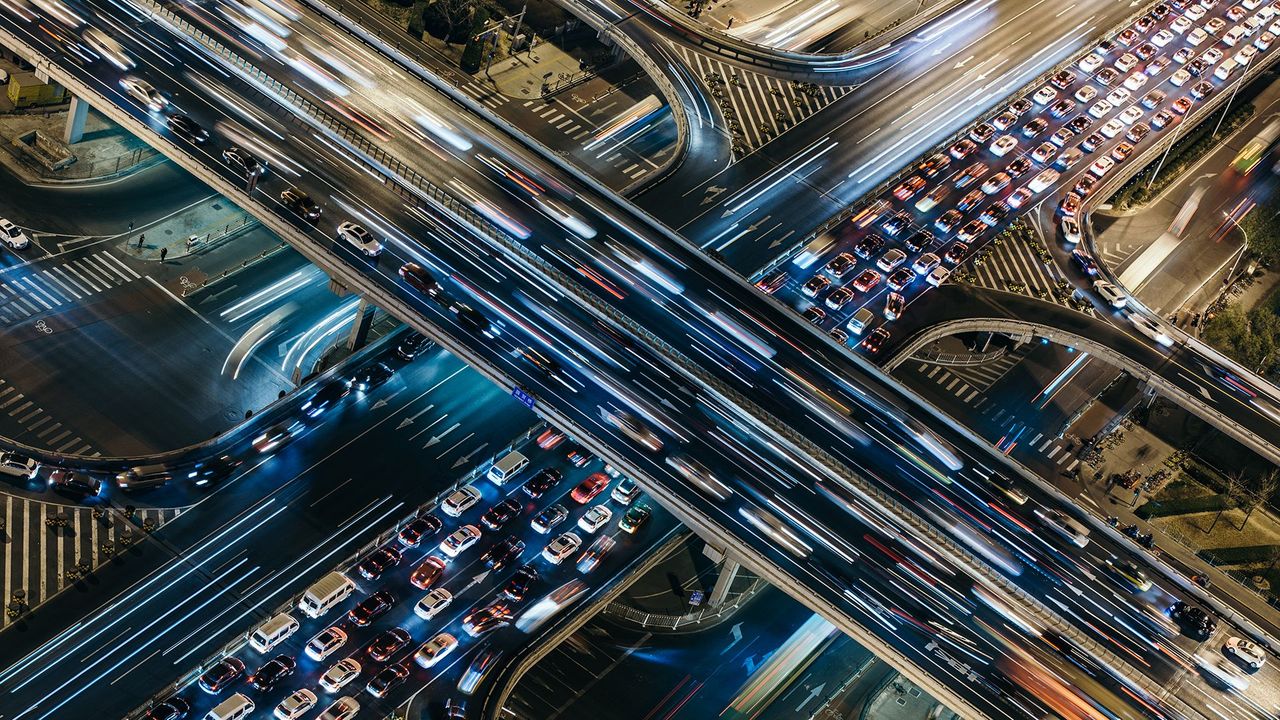

The Future of Urban Mobility with AI
Looking ahead, the trajectory of urban transportation is inextricably linked with the continued evolution and integration of Artificial Intelligence. The vision of the “future of urban mobility with AI” paints a picture of cities that are not just less congested, but smarter, more interconnected, and more responsive to the needs of their citizens.
It is clear that “AI will continue shaping more efficient, sustainable, and data-driven urban transportation systems.” This evolution will go far beyond optimizing traffic lights. We can expect to see AI playing a crucial role in a variety of innovative applications.


Consider the potential for “AI-powered public transit optimization (such as smart bus scheduling), advanced parking solutions, and integrated mobility platforms encompassing scooters, bikes, ride-hailing, and mass transit in a seamless ecosystem.” Imagine a city where your transit app not only tells you the best route across multiple modes of transport but also dynamically adjusts bus schedules based on real-time passenger demand and traffic conditions, or where parking availability is predicted and communicated seamlessly to drivers before they even enter a busy area. This level of integration, driven by AI, promises a truly fluid and user-centric transportation experience. The foundational “AI solutions for traffic congestion” are what make this sophisticated future possible.
Challenges and Considerations
While the benefits of AI in traffic management are substantial, the widespread adoption of these technologies is not without its hurdles. It’s important to acknowledge the practical considerations that cities must address to successfully implement these advanced solutions.


Implementing these AI solutions requires careful planning. “Widespread adoption of AI traffic solutions requires addressing data privacy, securing investments in new infrastructure, and ensuring public trust and acceptance.” Data privacy concerns are paramount, as these systems rely on collecting and analyzing vast amounts of data, often including location information. Robust security measures and transparent data usage policies are essential to build and maintain public trust. Furthermore, significant investment is needed to upgrade existing infrastructure with the necessary sensors, communication networks, and computing power. Finally, public engagement and education are critical to foster understanding and acceptance of these new technologies, ensuring that citizens feel comfortable and confident in their use.
Concluding Thoughts
Artificial Intelligence is emerging as a truly transformative force in the complex arena of urban traffic management and mobility enhancement. It offers intelligent, adaptive, and data-driven approaches that were previously unattainable.
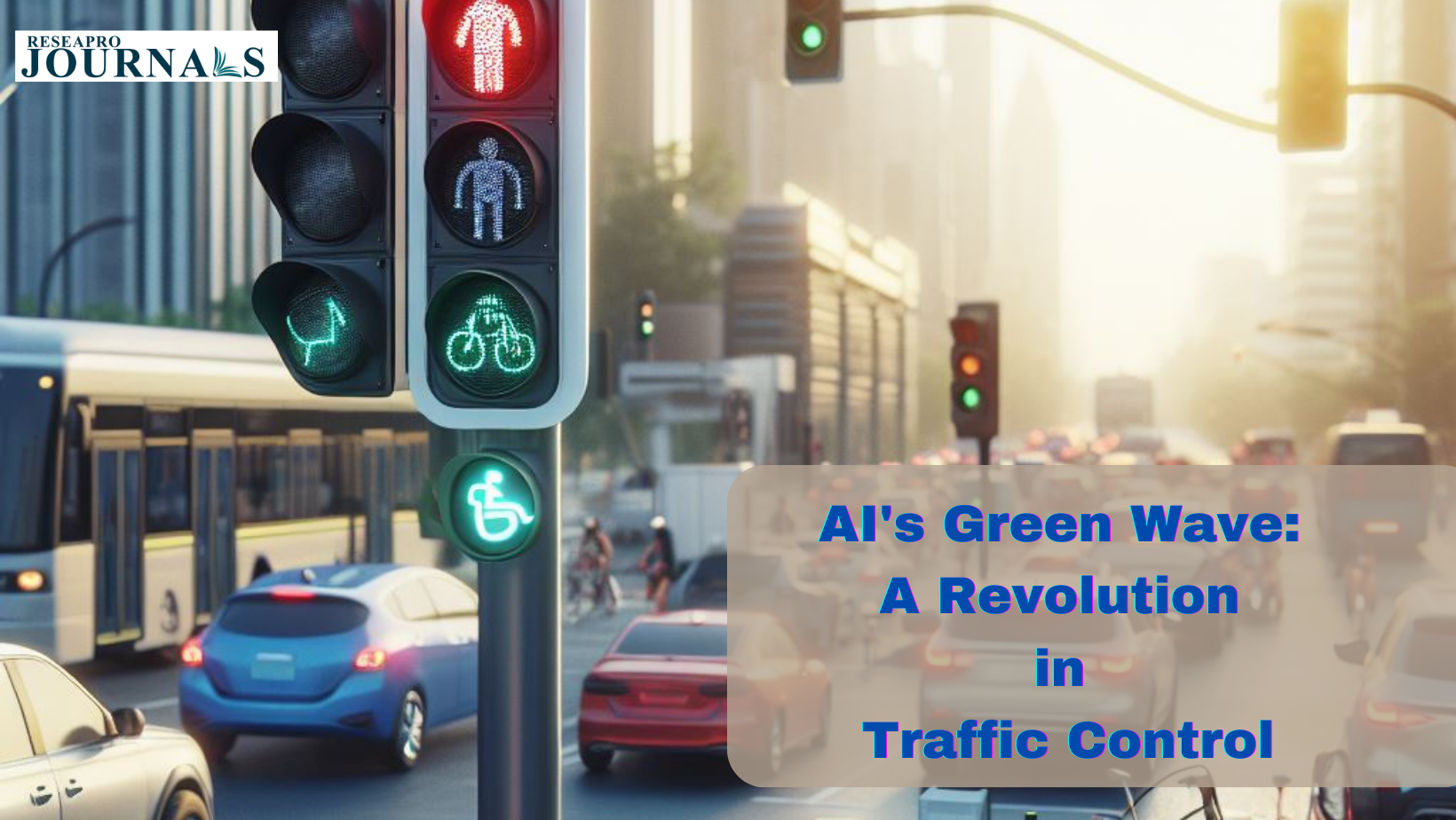

It is undeniable that “AI solutions for traffic congestion are central to the future of urban mobility, promising smarter, safer, and more livable cities for the coming decades.” By leveraging the power of data analytics, predictive modeling, and real-time control, AI is reshaping our urban landscapes for the better. The potential for more efficient, sustainable, and enjoyable urban environments is immense, and AI is the key enabler of this progress.


As we look forward, embracing and investing in AI technologies for traffic management is not merely an option, but a necessity for cities aiming to thrive in the 21st century. The journey towards smarter urban mobility is well underway, and AI is paving the way for more efficient and sustainable cities for generations to come.


